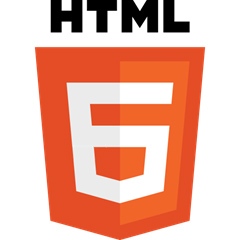Despite the fact that it is planned to fully approve the HTML5 specification and achieve the widest possible interoperability
only in 2014, ideas about how this next-generation specification should look like HTML.next, as it is called in the W3C consortium , are already starting to
crystallize. .
New elements of semantics
This element is proposed to be used to integrate files from a ZIP archive (ZIP as the main format, others are possible) directly into a web page. Advantages of this approach: web browser access to files from ZIP, reduced bandwidth requirements (which is especially true for mobile platforms).
Usage example:
Activities from our family reunion Semantics for headings and authors
It is used to identify the names of books, blog posts, films, etc. with their respective authors, even if the markup applies to only a few paragraphs. This semantics can be implemented in the form of pseudo-markup and determine the relationship between elements.
Example:
[title: The praise of Shadow id:praise by:junichiro]
is a book written by [author: Junichiro Tanizaki id:junichiro]
explaining … etc.
This item (similar to
) is used to indicate geo-information. It is suggested to use with lat, long, altitude attributes:Бермудский треугольник This is my first article on the page, and it's really cool.
This article is on superconducting fields, and is even cooler than my first article.
Description of common, commonly used structures in HTML contributes to the optimization of search engines and component management, as different widgets can use this structure in different ways not necessarily participate in the list numbering mechanism can be used with anchors to create fast ToC works well on blogs that are apparently accepted as the basis for content sharing in HTML5 Forms Automatic capitalization in input forms here .Enhanced Form Authentication Control Localization Multimedia Responsive Images more ).Adaptive Streaming Adaptive Streaming , Video Metrics . additional media status element that allows displaying the current status (e.g. coordination of data transfer with the server) additional media error element (e.g. transmission negotiation error) additional media element of events (e.g. change in bitrate of a stream) An additional media property item (e.g. current bit rate, which may be related to other QoS metrics) Audio Balance Video playback improvement fast / slow play / rewind previous / next frame Full Screen and Screenshots domElement.fullScreen();
domElement.getImageData(0, 0, domElement.offsetWidth, domElement.offsetHeight);
Text editing Element blocks : p, ul / li, ol / li, dl / dt / dd, blockquote, prespans : strong / em / a / sup / sub / u / code / strike.inline-blocks : img, brtables : table / tr / th / tdsupport for copying / pasting images from / to the system buffer (connected by an attribute) support for copying / pasting texts and HTML from / to the system buffer (connected by an attribute) should not support inline styles may have the attribute content-style = "some.css" that defines the styles of elements inside the editor Copy / Paste Features Lorem Ipsum Dolor sit et cetera Lorem Ipsum Dolor sit et cetera
If you copy the item 'Dolor' and paste it into a regular WYSIWYG text editor, you should get “3. Dolor. "Components and ECMAScript “Behaviors” or dynamic subclasses of DOM elements document.behaviors["ul.some>li"] = { // the behavior class:
attached: function() {...},
detached: function() {...},
onmousedown: function() {...},
onclick: function() {...},
...
};include ('' url ''); import url (...) in CSS):window.include("url"[,mime/type])JavaScript: namespace and classes web-dev.info .Syntax highlighting for elements
Подсвечивает исходный код (на выбор: bash, cpp, cs, xml, html, java, javascript, lisp, lua, php, perl, python, ruby, sql, scala, tex). here . 

